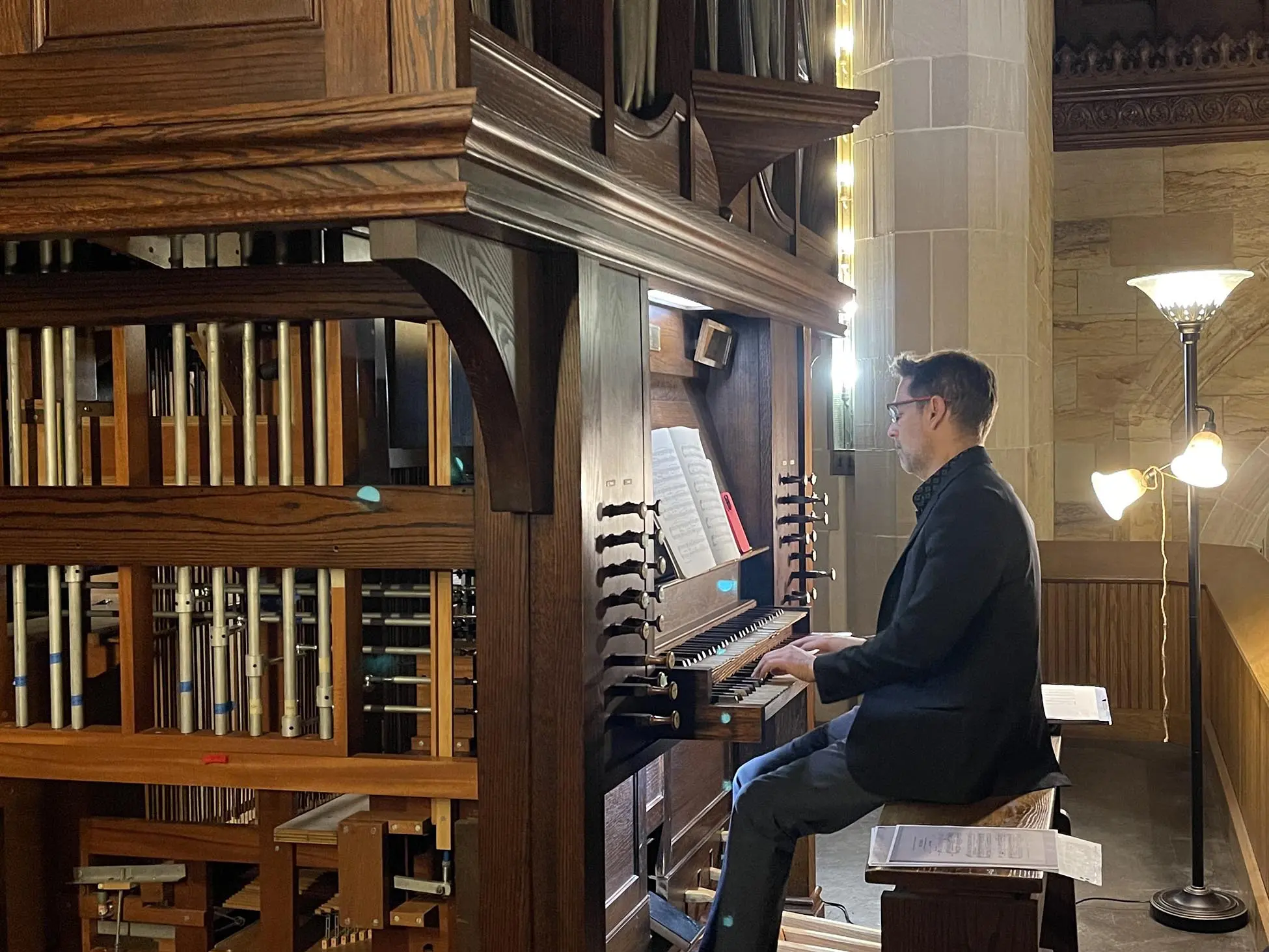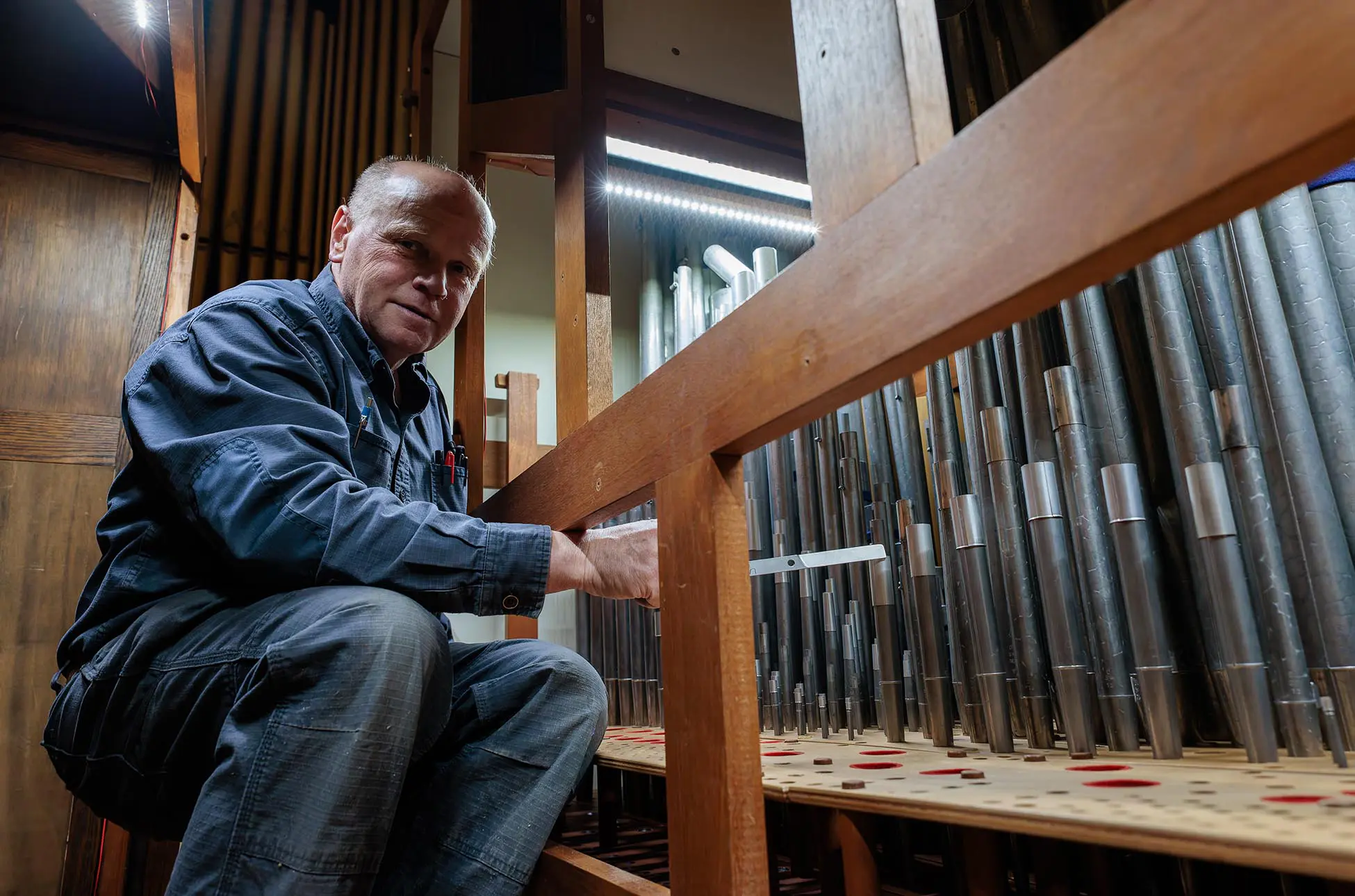Old Pipe Organ Finds New Home at Pastoral Center

Story by Shelley Wolf
An old pipe organ that fell silent in Enfield is now living a new life in Bloomfield, where it is captivating Catholic music-lovers once again.
Having served parishioners for many years at St. Adalbert Church in Enfield, the pipe organ is now providing music for the liturgies at St. Thomas Chapel at the Pastoral Center in Bloomfield, where it is being enjoyed by archdiocesan employees and invited guests.
The organ from St. Adalbert Church was built in 1986 by J. W. Walker & Sons, currently located in Devizes, Wilshire, England, and it was installed at St. Adalbert that same year.
“It’s rare because Walker only built about eight in America,” says Stephan Maier, owner of Stephan Maier Tracker Organs in Orange, Mass., who services organs throughout New England. Maier honed his specialized craft, learning to repair and tune organs in his homeland of Germany.
The organ, which served the St. Adalbert community, became available after the community was merged into St. Jeanne Jugan Parish in 2022 and the church was subsequently closed in 2024.
Maier’s work on the organ began last September. “An instrument like this is not like a piano. You can’t just roll it into a truck, and then roll it into a new place,” Maier says. “You completely dismantle it, and then you completely reassemble it and, in the process, we check all the pieces and we refurbish what needs to be refurbished.”
“Every instrument is unique,” he adds. Working on each pipe organ is “like building a house.”
After reassembly and repairs, Maier’s team returned in January to complete the job. “We make some adjustments to the sound of the organ, what we call voicing, the tonal work,” he explains, “because that needs to be adjusted to the building now that the organ is at St. Thomas Chapel.”
According to the Pipe Organ Database of the Organ Historical Society, the pipe organ from St. Adalbert was built in a traditional design, with hinged doors that enclose the keyboards. It is a classic “mechanical stop action” instrument with two manuals (keyboards) and 24 stops (knobs that indirectly control the air flow over the pipes), with draw knobs in vertical rows and a concave radiating pedalboard.
Pipe organs produce sound by driving pressurized air through the organ pipes as directed from the keyboard. This organ is known as a “tracker organ” because it uses “trackers,” or thin strips of wood, to create a pulling motion that links the key or pedal pressed by the organist to the valve that allows air to flow into the pipes.
“In the genre of pipe organs, there are mechanical organs and organs that are still pipe organs but they have an electric action. This one has a mechanical action path. And therefore, it’s called a tracker organ,” Maier says. “So, the only electric part in this instrument is actually the blower that generates what we call the wind, or the air pressure for the organ.
“But everything else is strictly mechanical and, in that sense, it is a little more complicated than, say, an electric action organ, where you just have a bunch of wires and contacts and magnets,” he explains.
“And essentially this [mechanical] type of organ is what Bach and Mendelssohn played on,” Maier notes, “because in those days there wasn’t electricity, so it was all mechanical.”

